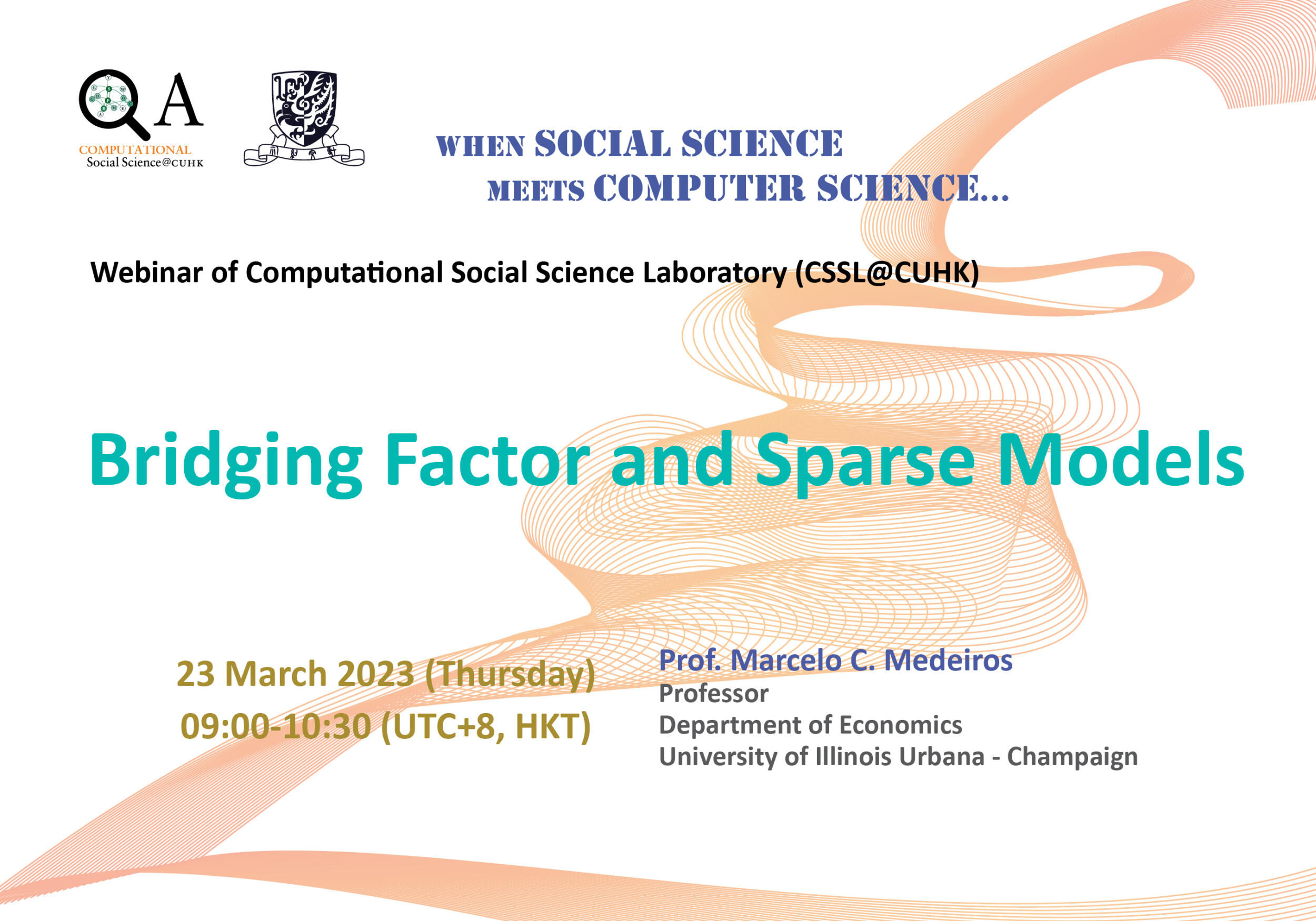Events
[CSSL@CUHK Webinar] Bridging Factor and Sparse Models
23 Mar 2023
09:00 – 10:30 (UTC+8, HKT)
Webinar
Prof. Marcelo C. Medeiros
Marcelo C. Medeiros is Professor of Economics at the University of Illinois at Urbana-Champaign. Marcelo has a BA, MSc. and PhD degrees in Electrical Engineering from PUC-Rio, with an emphasis in Statistics, Optimization and Control Theory. His area of research is econometrics and data science, and he is particularly interested in the intersection between econometric/statistical theory and cutting-edge machine learning tools. He focuses his research both on theoretical developments as well as empirical applications in finance, macroeconomics, forecasting, and the evaluation of public policies, among other areas. Marcelo was elected Fellow of the Society of Financial Econometrics (SoFiE) in 2022 and serves as Associate Editor for the Journal of the American Statistical Association (Theory and Methods), the Journal of Business and Economic Statistics, and the Journal of Financial Econometrics. Marcelo has published more than 50 papers in international peer-reviewed journals such as, for example, the Journal of the American Statistical Association, the Journal of Econometrics, the Journal of Business and Economic Statistics, Econometric Theory, the International Journal of Forecasting, and the Journal of Banking and Finance. Finally, Marcelo also serves as an external consultant for firms in Brazil and abroad.
fssc06@cuhk.edu.hk
Factor and sparse models are two widely used methods to impose a low-dimensional structure in high-dimensions. However, they are seemingly mutually exclusive. We propose a lifting method that combines the merits of these two models in a supervised learning methodology that allows for efficiently exploring all the information in high-dimensional datasets. The method is based on a flexible model for high-dimensional panel data, called factor-augmented regression model with observable and/or latent common factors, as well as idiosyncratic components. This model not only includes both principal component regression and sparse regression as specific models but also significantly weakens the cross-sectional dependence and facilitates model selection and interpretability. The method consists of several steps and a novel test for (partial) covariance structure in high dimensions to infer the remaining cross-section dependence at each step. We develop the theory for the model and demonstrate the validity of the multiplier bootstrap for testing a high-dimensional (partial) covariance structure. The theory is supported by a simulation study and applications.
For details: https://linktr.ee/cssl_cuhk


